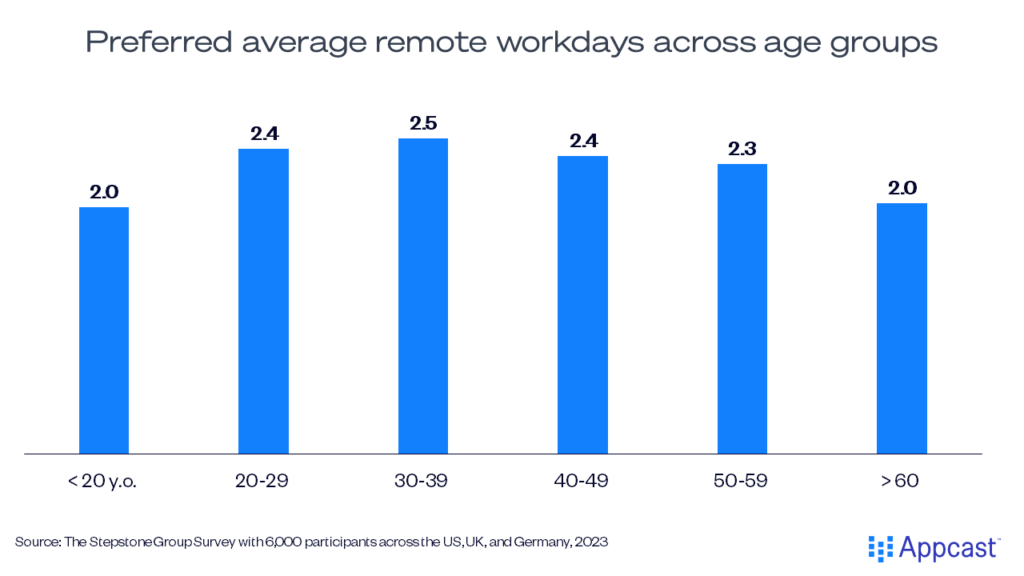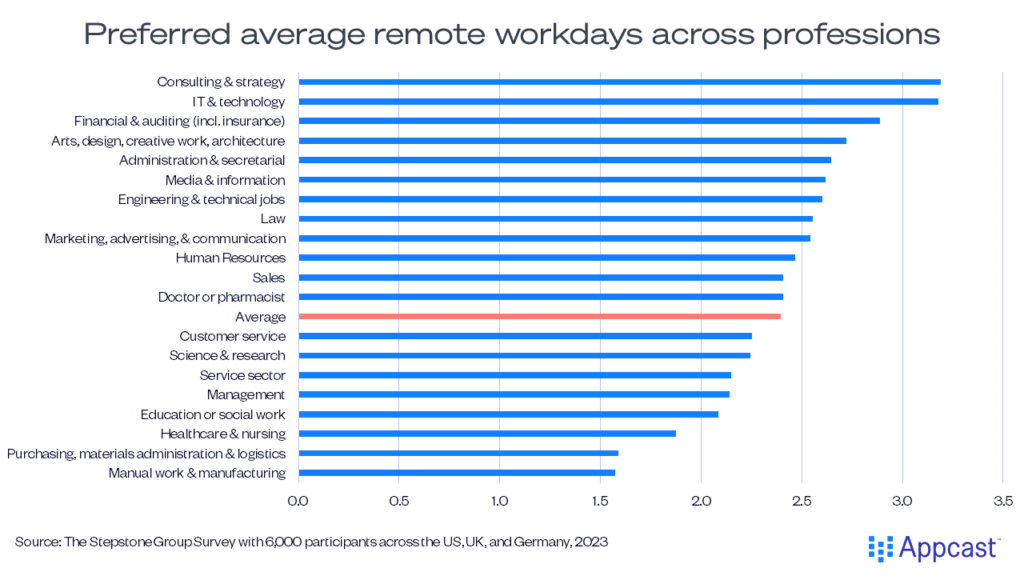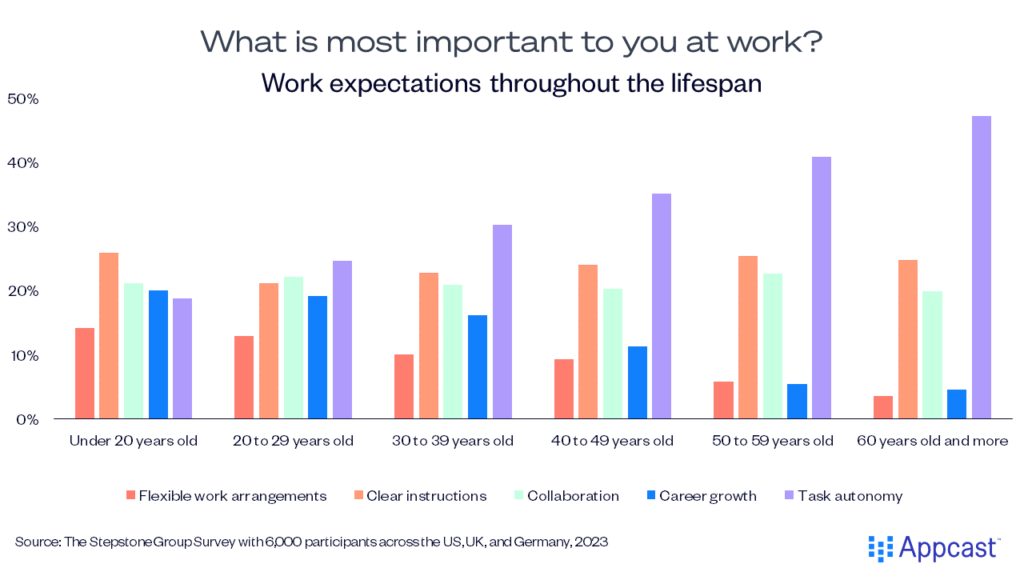Over the past few years, there has been a remarkable transformation in the way people work. The United States witnessed a significant change in remote work patterns between 2019 and 2021. According to the 2021 American Community Survey, the number of individuals primarily working from home tripled during this period, skyrocketing from 5.7% (9 million people) to a substantial 17.9% (28 million people).
This shift in work dynamics offers both opportunities and challenges for businesses. Striking the right balance between employees’ desire for flexibility and the need for collaboration and culture building is the key to recruiting and retaining top talent in this new era of work. It seems like younger employees, in particular, are emerging as a driving force behind the demand for more flexible work arrangements. But how do younger employees’ attitudes toward work differ from other generations?
Study reveals no association between age and remote preferences
Findings from a March 2023 survey conducted by The Stepstone Group, which included responses from 6,000 individuals in the United States, the United Kingdom, and Germany, shed light on the preferences for working from home. On average, respondents want to work from home 2.4 days per week. The survey results are consistent with those from the ‘Work from Home’ survey, which specifically focused on the United States. In this case, the average preference for remote work was found to be slightly lower, at 2.2 days per week.
A noteworthy discovery from the former study is that individuals aged 30 to 39 expressed the strongest preference for working remotely – 2.5 days per week. Surprisingly, the survey revealed that the average preference of the youngest age group, those below the age of 20, stood at just 1.95 days, even lower than the preference expressed by individuals over the age of 60. Despite these variations across age groups, it’s important to highlight that none of the age brackets significantly deviate from the overall average of 2.4 working days. This suggests that, while age may influence preferences to some extent (e.g., people in their 30s to 40s often have young children), the desire for remote work remains relatively consistent across generations.

Significant disparities in preferred average remote workdays by profession
The variance in preferred average remote workdays becomes more pronounced when we consider different professions. Employees in the consulting and strategy, IT, and technology sectors prefer more than three days of remote work per week, while those in the customer service and science and research sectors wish to work remotely around two days weekly. Notably, even traditionally onsite occupations like healthcare, nursing, manual work, and manufacturing express a desire for more than a day and a half of remote work. This result may serve as a glimpse into the near future of work, where the boundaries between traditional onsite roles and remote work could progressively fade.

Where age groups actually differ
Employees’ career expectations and needs evolve as they progress in their careers. Age is related to critical work and career outcomes such as career decisions, job search and turnover, work motivation and behavior, and attitudes. While the likelihood of expecting work flexibility is the highest among younger people, their primary aspiration often centers around the need for clear guidance and well-defined instructions. They seek a blueprint on what tasks to undertake, how to execute them, and an understanding of the available resources at their disposal. However, as employees advance in their careers and gain experience, they increasingly value the freedom and autonomy to make decisions and determine how best to perform their roles. These results underline that personal development and career progression outweigh the expected differences between generations, such as Gen Z and Baby Boomers.

Crafting an effective remote work strategy for talent acquisition
When developing a remote work strategy that appeals to top talent, recruiters should consider several key factors. First of all, the age of the workforce may not necessarily inversely correlate with a greater desire for increased remote workdays. In fact, age is unlikely to be a reliable predictor of remote work preferences. For instance, our data reveals that 22% of employees aged 20 to 29 prioritize collaboration as the most crucial aspect of their work, with only 13% emphasizing flexible work arrangements. This highlights the individuality of employee preferences that transcend generational lines.
Instead of focusing on generational stereotypes, a strategy that targets the specific roles recruiters are hiring for will be more successful. For organizations predominantly recruiting software developers or consultants, for example, creating a culture that supports more flexible office days could be a highly attractive proposition for potential talent.
Moreover, employees in traditionally onsite jobs are increasingly seeking greater flexibility in their work arrangements. In an environment marked by skill shortages, especially within these occupations, reevaluating the nature of roles and how tasks are executed can set employers apart from their competition. This willingness to adapt to evolving work preferences and needs demonstrates an employer’s commitment to meeting the changing expectations of their workforce.
In summary, a successful remote work strategy for talent acquisition must be tailored to individual preferences and the nature of the roles being offered. By recognizing the diversity of employee priorities and embracing flexible work arrangements where appropriate, organizations can position themselves as employers of choice, attracting and retaining top talent in a dynamic and ever-evolving job market. Generational stereotypes are not a sound talent attraction strategy.








